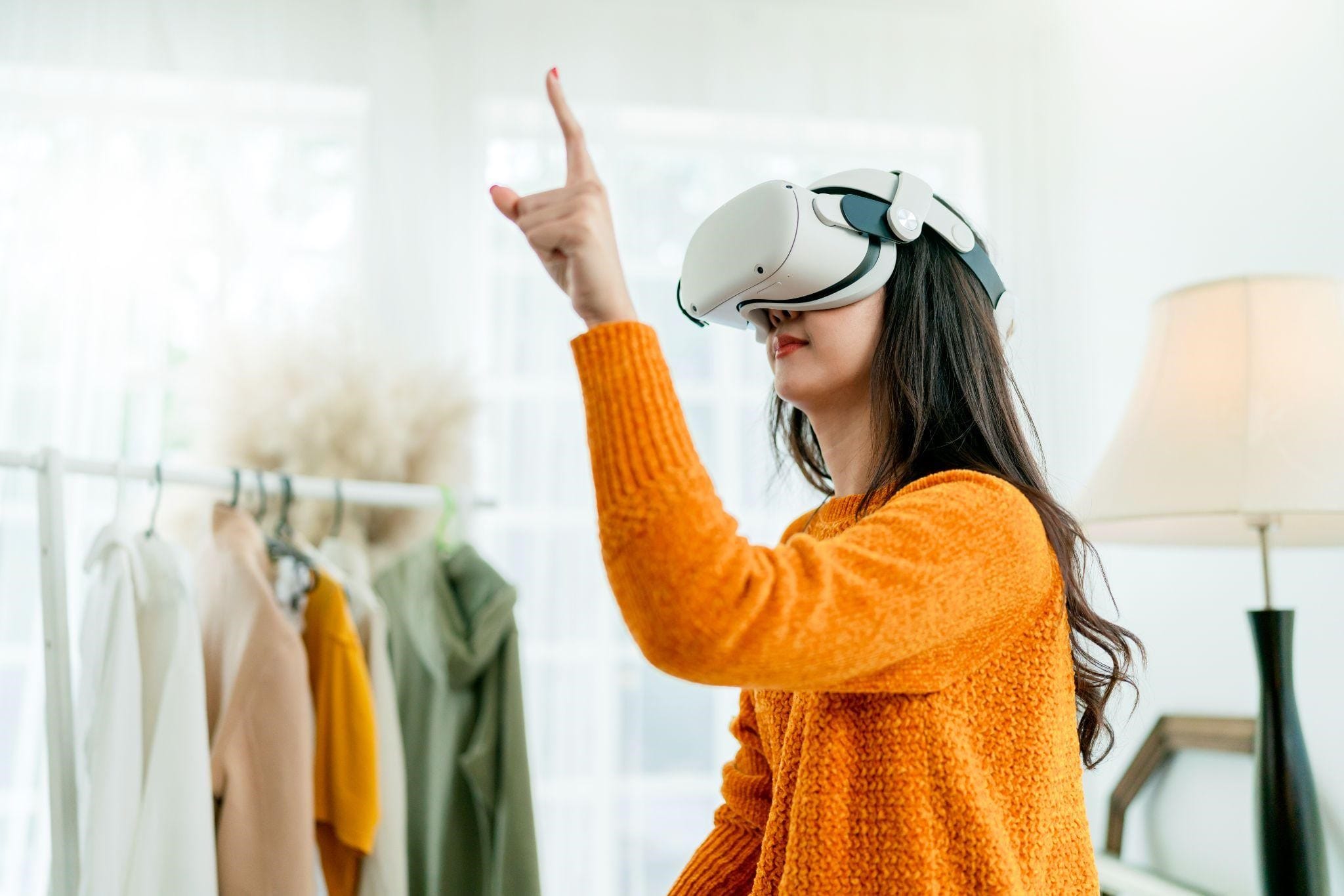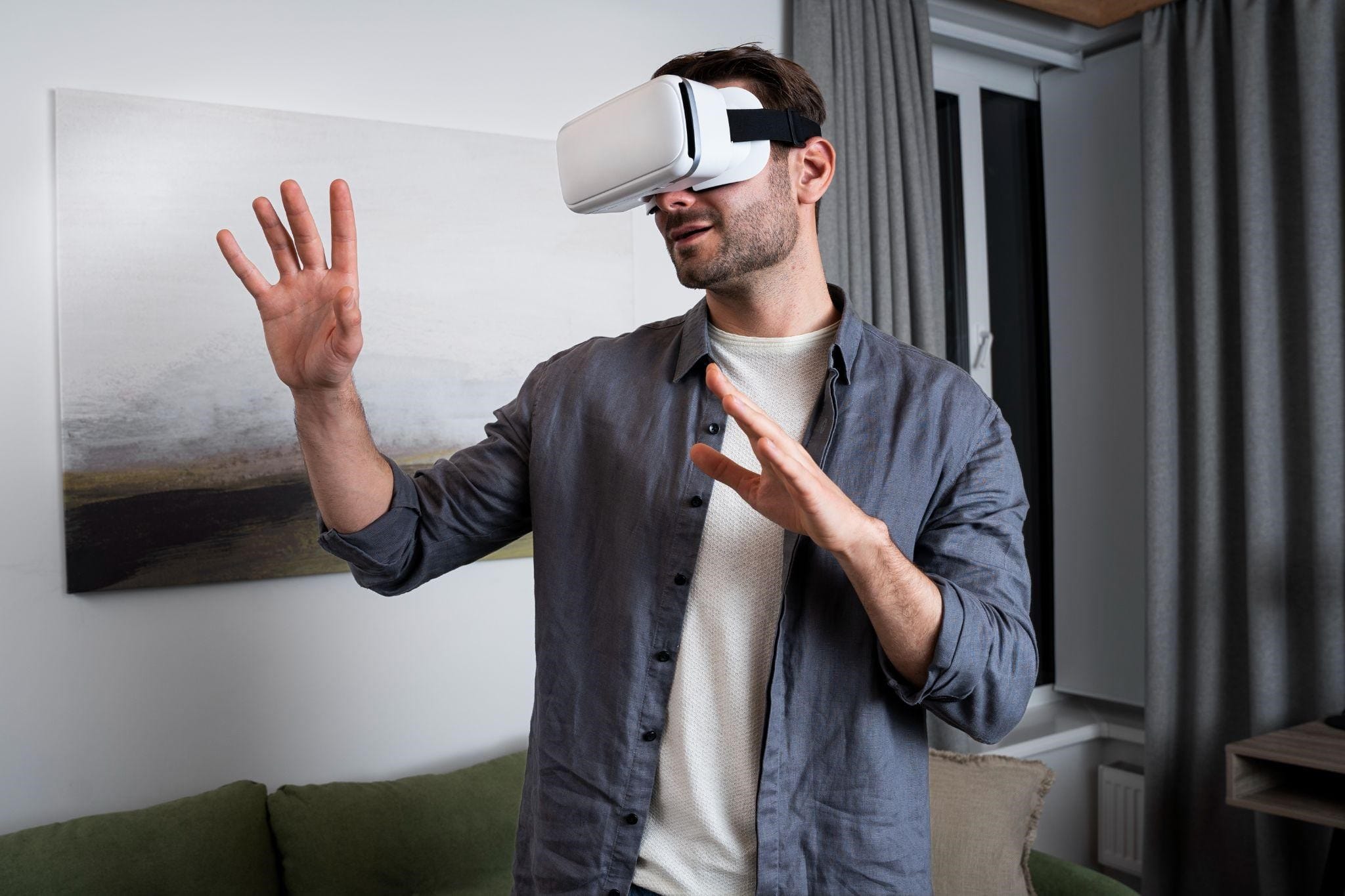Interactive Advertising Examples That Turn Ads Into Experiences
The digital space is overflowing with ads, each fighting for a few seconds of user attention. As audiences grow more selective, brands must reinvent their campaigns to stay relevant, relatable, and interesting. One of the most effective ways to achieve that is through interactive advertising, which turns ordinary ads into experiences people genuinely want to engage with.
Global brands like Nike, Burger King, Wendy's, Asian Paints, and L'Oréal are already setting examples of interactive ads by using immersive formats to drive engagement, boost recall, and build stronger brand loyalty. By learning from these campaigns, advertisers and marketers can craft strategies that help them stay relevant and memorable in this new era of digital marketing.
What is Interactive Advertising?

Interactive advertising is a form of digital marketing that encourages two-way communication between a brand and its audience. Instead of simply delivering a message, it invites people to engage, explore, and respond within the ad itself.
These interactive ads prompt people into action and encourage them to take an active role in the experience through creativity, rewards, and incentives. By inviting users to click, swipe, scan, or play, the audience becomes part of the brand story.
In essence, interactive advertising aims to:
Transform passive viewers into active participants
Encourage meaningful consumer engagement and response
Create memorable experiences that build stronger emotional connections
Generate measurable outcomes such as higher interaction rates, longer attention spans, and better conversions.
Interactive Ads vs Traditional Ads
Traditional advertising focuses on delivering a message to the audience, while interactive advertising invites the audience to become part of the message. The main difference lies in how people experience the two types of ads.
Traditional Ads
Traditional ads such as TV commercials, print spreads, or static digital banners rely on visuals, music, and repetition to build awareness.
For example, a Coca-Cola holiday commercial evokes nostalgia and emotion but does not invite any form of interaction beyond viewing. These campaigns are effective for creating broad awareness, but their impact often fades quickly in today's fast-moving digital landscape.
Interactive Ads
Interactive ads refer to interactive videos, AR ads, and gamified ads that encourage users to participate and shape their own experience. Interactive ads drive deeper engagement and longer on-screen time.
Samsung's Galaxy S25 Ultra launched the first voice-enabled mixed reality (MR) ad via Flam. Scanning the ad offered a personalized, interactive experience where users could control content using their voice.
Kiro Beauty's shoppable video ads allowed users to try and buy products directly within the ad, seamlessly blending engagement and purchase.
Asian Paints' Mixed Reality ad also turned a simple print campaign into an immersive journey through the valleys of Kashmir, bringing the story to life in users' surroundings.
Aspect | Traditional Ads | Interactive Ads |
Audience Role | Passive viewers | Active participants |
Engagement | Limited to watching or reading | Encourages clicks, swipes, and actions |
Experience Type | One-way communication | Two-way experience |
Measurement | Based on reach and impressions | Based on interactions and conversions |
Emotional Impact | Short-term recall | Long-lasting connection |
Examples | TV spots, print ads, static banners | AR filters, gamified ads, interactive videos |
Interactive Advertising Examples That Bring Brands Closer to People

The best interactive ads do more than promote a product; they invite people to participate in a shared experience. From music and beauty to entertainment and retail, brands are using creativity and technology to spark emotion, drive engagement, and turn moments into memories.
Taylor Swift: "The Tortured Poets Department" (TTPD) on Google Search
Idea: Taylor Swift turned Google Search into a scavenger hunt for fans, asking them to solve over 30 million puzzles collectively to unlock details about her new album.
Performance Metrics: The campaign generated millions of searches within hours, trended globally, and boosted anticipation across social media.
Success Rate: A masterclass in fan engagement, it blurred the line between entertainment and marketing, showing how participation can amplify fandom-driven promotion.
L'Oréal: Virtual AR Try-On Experience
Idea: L'Oréal integrated Augmented Reality (AR) into its app and social platforms, allowing users to virtually try on makeup products in real time before purchasing.
Performance Metrics: Over 20% higher conversion rates compared to non-AR shoppers and a 30% increase in time spent per session.
Success Rate: The campaign revolutionized online beauty shopping, increasing consumer confidence and bridging the gap between digital and physical retail.
Burger King: "Burn That Ad"
Idea: Users were invited to "burn" rival fast-food ads virtually using the Burger King app to reveal a free Whopper coupon.
Performance Metrics: The campaign recorded over 400,000 interactions, 1.5 million Whopper redemptions, and a 55% boost in app sales.
Success Rate: A bold and witty use of AR, it turned competition into engagement, proving that gamification drives real-world action.
Cadbury's Chocobakes: Personalized Festive Campaign
Idea: Cadbury launched an interactive campaign that let users enter their pin code to see personalized local stores and Diwali greetings featuring Shah Rukh Khan, tailored to their neighborhood.
Performance Metrics: Over 1.2 million personalized videos were generated and shared across social media during the campaign period.
Success Rate: It strengthened local business connections and showcased how personalization can build emotional resonance during key cultural moments.
Netflix: "Bandersnatch" Interactive Film
Idea: Netflix transformed passive viewing into active storytelling, allowing viewers to make choices that shaped the plot of Black Mirror: Bandersnatch.
Performance Metrics: The episode sparked massive global conversations, earned an Emmy for Outstanding Television Movie, and saw record engagement hours on Netflix.
Success Rate: It set a new standard for interactive entertainment, proving audiences crave control and immersion in storytelling.
Asian Paints: Kashmir Ad with Flam Mixed Reality
Idea: Using Flam's Mixed Reality platform, Asian Paints brought a static print ad to life, transporting viewers into a scenic Kashmir experience when they scanned the ad through their phones.
Performance Metrics: Thousands of scans within the first few days and high dwell times indicated strong audience curiosity and retention.
Success Rate: A simple print-to-MR transition showcased how immersive storytelling can rejuvenate traditional media and deepen emotional connection.
Christian Dior Parfums: AR Try-On
Idea: Dior allowed users to virtually try on fragrances through an AR lens, pairing scent storytelling with visuals and mood-driven interactions.
Performance Metrics: The campaign achieved strong engagement rates on Instagram and Snapchat, particularly among Gen Z consumers.
Success Rate: It elevated luxury marketing through interactivity and made fragrance exploration into a digital sensory journey.
Samsung: Voice-Enabled Mixed Reality Campaign
Idea: Samsung collaborated with Flam to launch a voice-enabled MR advertisement for the Galaxy S25 Ultra.
Performance Metrics: This interactive ad creates a personalized, immersive experience instantly upon scanning, allowing users to control and explore product features dynamically using their voice commands.
Success Rate: This initiative shows how integrating voice with mixed reality can elevate advertising, turning a standard campaign into an interactive, memorable experience.
FlipkartXFlam: QR-Powered Interactive Festive Ads
Idea: Flam collaborated with Flipkart during their massive Big Billion Days Sale to give their traditional print ads an interactive edge with Mixed Reality.
Performance Metrics: The campaign was successful in leveraging immersive technology to drive direct sales opportunities and successfully lead customers from a physical ad straight to Flipkart's TV product listings.
Success Rate: The campaign shows how MR ads can elevate the "at home" shopping journey and help boost direct sales for brands.
How to Create Interactive Ads That Convert?
Creating interactive ads and MR experiences for brands that actually drive results requires research, personalization, and creativity. Here's how brands can do it:
Define Your Objective: Know whether the goal is engagement, lead generation, awareness, or sales. This shapes the format and messaging of your interactive ad.
Choose the Right Format: Pick AR, VR, gamification, shoppable videos, or Mixed Reality based on your audience and campaign goals. For example, beauty brands benefit from AR try-ons, while entertainment brands can leverage interactive storytelling.
Craft a Clear Call to Action: Participation should lead to a tangible outcome. Coupons, in-app purchases, or social sharing can help turn engagement into measurable results.
Use Personalization: Tailor experiences to your audience using geolocation, preferences, or past behavior. Personalization increases engagement and conversion rates.
Measure: Track interactions, dwell times, click-throughs, and conversions. Use this data to refine and optimize future campaigns.
How to Make a Good Interactive Ad?
Memorable interactive and immersive ad campaigns combine creativity, usability, and strategy. Here are the core elements that make an interactive ad effective:
Simplicity: The interaction should be easy to understand. Users should know immediately what to do without lengthy instructions.
Immersive Experience: Make the experience memorable by using AR, VR, or gamification to immerse the user in the brand story.
Offer Value: Provide something in return for participation, whether it's entertainment, personalization, or tangible rewards.
Consistency with Brand Identity: The ad should reflect the brand's personality and messaging, ensuring it feels authentic and strengthens brand perception.
Cross-Platform Accessibility: Make the ad accessible on multiple devices and channels. QR codes, mobile-friendly formats, and social media integrations help reach a broader audience.
Trackable Outcomes: Include measurable elements, like clicks, shares, or conversions, to evaluate effectiveness and justify ROI.
Conclusion
Interactive advertising is no longer a novelty; it is becoming a core part of how brands connect with audiences. From AR try-ons and gamified experiences to Mixed Reality storytelling, top brands are using interactive ads to engage, entertain, and convert.
To stay relevant in today's crowded digital landscape, marketers and advertisers must embrace these formats, create campaigns that turn passive viewers into active participants, and deliver measurable results.